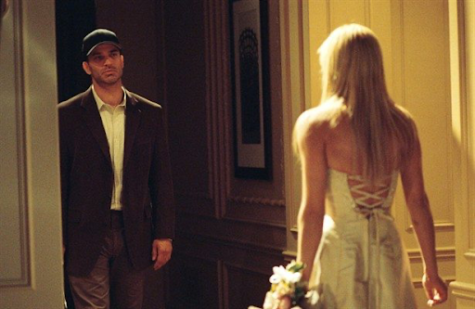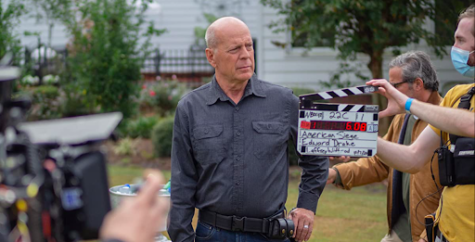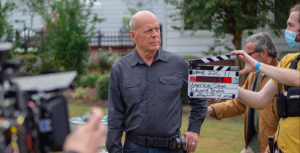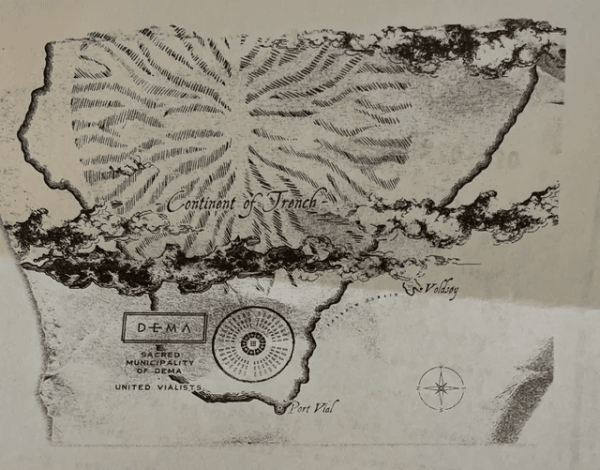Three Thousand Years of Longing: Genie trope meets historical fiction

Promotional Material Courtesy of: FilmNation Entertainment, Kennedy Miller Mitchel
The Djinn (Idris Elba) shadows Dr. Alithea (Tilda Swinton), displaying the mysterious and looming air of the Djinn in comparison to his counterpart.
Three Thousand Years of Longing, released Aug. 26 and based on the short story collection The Djinn in the Nightingale’s Eye by A.S. Byatt, meets the standard set by its original tale.. Directed by George Miller, the hour and 48-minute-long film features engaging visuals alongside an intimate saga. The film provides a refreshing but stark contrast to the Mad Max series for which Miller is known.
The tale follows introverted historian Dr. Alithea Binnie (Tilda Swinton) on her trip to Istanbul, where she purchases a mysterious vessel from a local antique shop. The vessel turns out to be a beacon calling the genie entity, Djinn (Idris Elba), into the physical realm. The film follows the Djinn’s telling of his past encounters, as he tries to convince Dr. Alithea to set him free from the vessel’s damnation by granting her three wishes. During the Djinn’s recollections, the viewer enjoys stories of romance, drama, war, and suspense dating back to the Meso-American empires.
The film acknowledges the stereotypes of the script’s trope, as Dr. Alithea is skeptical, claiming to be content and undesiring of any wishes. The polarity of the two main characters creates a playful and genuine dynamic between them.
Elba’s narrative abilities are authentic and allow the viewer to comfortably enjoy each story, with insightful commentary that one could listen to for ages. Nearly the polar opposite, Tilda Swinton’s delicate demeanor creates a stark contrast throughout the film. She agreeably assumes her role of an intelligent and solitary scholar, well suited to Swinton’s persona. The contrast between the two leads creates entertaining banter. After hearing the Djinn relay each of his tales, and Dr. Alithea finally reveals what her three wishes are, the film redirects itself towards a slightly awkward and strange closing in contrast to its whimsical first half. The overall message of the importance of storytelling becomes diluted with the forced connection to Alithea’s bleak life.
Three Thousand Years of Longing utilizes a bright and eye-catching color palette, illuminating the mythical aspects of the film with a crisp atmosphere and stimulating coloration. The smooth special effects enhance the emotions of the tales, mystifying each moment with cinematography that holds the viewer’s attention.
The captivating stories and striking visuals can keep a viewer entertained for the nearly two-hour duration of the film, but it also humanizes history through a dramatic and romantic lens. The film inspires the audience to consider the truth behind the stories embodied by the dramatic exhibitions of the movie.
For those who enjoy mythical visuals or historical-fiction, Three Thousand Years Longing is worth two hours of time. Despite the odd ending, the first two-thirds of the film are of redeeming quality, giving this film three and a half out of five feathers.
Your donation will support the student journalists of Archie Williams High School. Your contribution will allow us to purchase equipment and cover our annual website hosting costs. Each donation will receive a magazine subscription for a year (6 copies a year), and become a part of the important work our publication is doing.
$35 -- Subscription to the magazine
$50 -- Silver Sponsorship
$75 -- Gold Sponsorship
$100 -- Platinum Sponsorship

Grace is a senior, in her second year of journalism. She enjoys creating multimedia art and listening to 90s rap. She also loves puppies, rainbows, kitties...



















